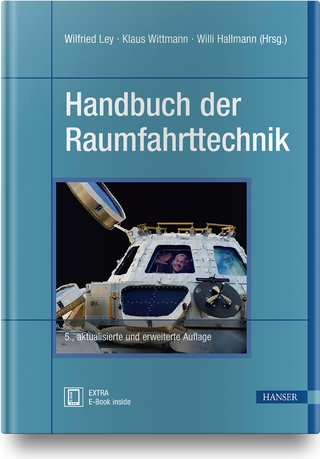
Payload and Mission Definition in Space Sciences
Seiten
2005
Cambridge University Press (Verlag)
978-0-521-85802-1 (ISBN)
Cambridge University Press (Verlag)
978-0-521-85802-1 (ISBN)
The processes that space missions follow, from the proposal to a space agency, to a successful mission completion, are numerous. This book is for scientists and engineers involved in the definition and development of space science missions.
This book is for scientists and engineers involved in the definition and development of space science missions. The processes that such missions follow, from the proposal to a space agency, to a successful mission completion, are numerous. The rationale behind approval of a mission, its definition and the payload that it will include are topics that cannot be presented in undergraduate courses. This book contains contributions from experts who are involved in today's space missions at various levels. Chapters cover mission phases and implementation, launchers and cruise strategies, including gravity assist maneuvers and different thrust scenarios. The payload needed for remote sensing of the Universe at various wavelengths and for in-situ measurements is described in detail, and particular attention is paid to the most recent planetary landers. Whilst the book concentrates on the ESA program Cosmic Visions, its content is relevant to space science missions at all space agencies.
This book is for scientists and engineers involved in the definition and development of space science missions. The processes that such missions follow, from the proposal to a space agency, to a successful mission completion, are numerous. The rationale behind approval of a mission, its definition and the payload that it will include are topics that cannot be presented in undergraduate courses. This book contains contributions from experts who are involved in today's space missions at various levels. Chapters cover mission phases and implementation, launchers and cruise strategies, including gravity assist maneuvers and different thrust scenarios. The payload needed for remote sensing of the Universe at various wavelengths and for in-situ measurements is described in detail, and particular attention is paid to the most recent planetary landers. Whilst the book concentrates on the ESA program Cosmic Visions, its content is relevant to space science missions at all space agencies.
1. The life cycle of an ESA mission and how to get involved Alvaro Gimenez; 2. Design issues for space science missions Yves Langevin; 3. Instrumentation in space X-ray astronomy X. Barcons; 4. EUV and UV imaging and spectroscopy from space Richard Harrison; 5. The luminosity oscillations imager, a space instrument: from design to science Thierry Appourchaux; 6. Hipparcos and Gaia: the development of space astrometry in Europe M. Perryman; 7. Space physics and the space environment A. Balogh; 8. Planetary observations and landers A. Coradini.
| Erscheint lt. Verlag | 17.11.2005 |
|---|---|
| Verlagsort | Cambridge |
| Sprache | englisch |
| Maße | 181 x 254 mm |
| Gewicht | 973 g |
| Themenwelt | Technik ► Luft- / Raumfahrttechnik |
| ISBN-10 | 0-521-85802-X / 052185802X |
| ISBN-13 | 978-0-521-85802-1 / 9780521858021 |
| Zustand | Neuware |
| Haben Sie eine Frage zum Produkt? |
Mehr entdecken
aus dem Bereich
aus dem Bereich
Grundlagen, Mathematik, Kartenkunde, leistungsbasierte Navigation
Buch | Softcover (2022)
De Gruyter Oldenbourg (Verlag)
72,95 €
Das aktuelle Raumfahrt-Jahrbuch mit allen Starts
Buch | Softcover (2022)
Verein zur Förderung der Raumfahrt e.V. (Verlag)
18,90 €


